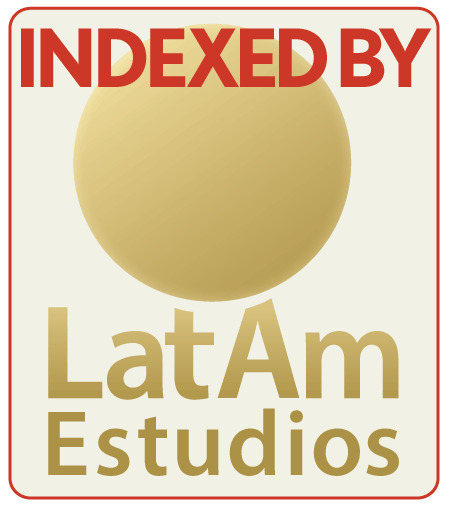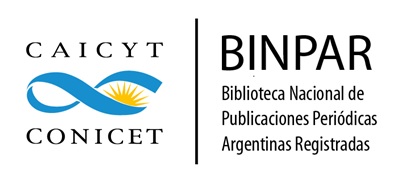Adolescence and intimacies: narratives in transition
DOI:
https://doi.org/10.24215/18524907e052Keywords:
urban youth, affectivity, narratives, intimacyAbstract
In this article, the author explores adolescents' assessments of intimacy and analyzes, based on them, how affective relationships are configured and involved today. The research is part of the interpretive paradigm and the recovery of the field work was carried out through discussion groups and semi-structured interviews with students from preparatory schools in the Metropolitan Area of Guadalajara, Mexico. The stories obtained suggest that intimate relationships are woven, to a large extent, around social networks, which provokes the rehearsal of narrative plots that replace the dominant stories that for a long time were positioned as infallible and as unique to organize the modes of live the intimacies.
Downloads
Metrics
References
Alberoni, F. (1991). Enamoramiento y amor. Ciudad de México, México: Gedisa.
Arendt, H. (2005). La condición humana. Barcelona, España: Paidós.
Bauman, Z. (2006). La vida líquida. Barcelona, España: Paidós.
Berger, P., Luckmann, T. y Zuleta, S. (1968). La construcción social de la realidad. Ciudad Autónoma de Buenos Aires, Argentina: Amorrortu.
Bohórquez, C. y Rodríguez, D. (2014). Percepción de amistad en adolescentes: el papel de las redes sociales. Revista Colombiana de Piscología, 23(2), 325-338. http://dx.doi.org/10.15446/rcp.v23n2.37359
Bueno, G. (1972). Ensayos materialistas. Madrid, España: Taurus.
Carbajo Núñez, M. (2012). El espectáculo de la intimidad. Raíces históricas de la comunicación centrada en el yo. El Ágora USB, 12(2), 449-534. https://doi.org/10.21500/16578031.86
Coleman, J. (2008). La sociedad adolescente. En J. A Pérez, M. Valdez y M. H. Suárez, (Coords.), Teorías sobre la juventud (pp. 109-167). Ciudad de México, México: Universidad Nacional Autónoma de México / Porrúa.
Comte-Sponville, A. (1996). Pequeño tratado de las grandes virtudes. Santiago de Chile, Chile: Andrés Bello.
Cruz, S. (2011). Sentido y práctica de la intimidad masculina. Una mirada desde los hombres. Sociológica, 73(26), 183-207. Recuperado de http://www.sociologicamexico.azc.uam.mx/index.php/Sociologica/article/view/109
Escalante, F. (2004). El derecho a la privacidad. Cuadernos de transparencia 02. Ciudad de México, México: Instituto Nacional de Transparencia, Acceso a la Información y Protección de Datos Personales (IFAI).
Flick, U. (2007). Introducción a la investigación cualitativa. Madrid, España: Morata.
Giddens, A. (1987). Las nuevas reglas del método sociológico. Crítica de las sociologías interpretativas. Ciudad Autónoma de Buenos Aires, Argentina: Amorrortu.
Giddens, A. (2004). La transformación de la identidad. Madrid, España: Cátedra.
Hernández, R., Fernández, C. y Baptista, P. (2014). Metodología de la investigación. Ciudad de México, México: McGraw-Hill.
Hidalgo, A. y García, R. (2005). Historia de la filosofía. Oviedo, España: Eikasia.
Kaufman, G. A. (2015). Odium dicta. Libertad de expresión y protección de grupos discriminados en internet. Ciudad de México, México: Consejo Nacional para Prevenir la Discriminación (CONAPRED).
Lamas, M. (2017). Trabajo sexual e intimidad. Cuicuilco Revista de Ciencias Antropológicas, (68), 11-34. Recuperado de https://www.revistas.inah.gob.mx/index.php/cuicuilco/article/view/11288/0
Livingstone, S. (2012). Tomando oportunidades arriscadas na criação de conteúdo jovem: O uso pelos adolescentes de sites de redes sociais para intimidade, privacidade e expressão própria. Comunicacao, Mídia e Consumo Sao Paulo, 9(25), 91-119. Recuperado de http://revistacmc.espm.br/index.php/revistacmc/article/view/313
Llopis, R. (2004). Grupos de discusión. Madrid, España: ESIC.
Luna, A. (2016). Pensando el trabajo sexual desde una protagonista. Una visión a las intimidades de una cantina en el sur de Veracruz. Andamios, 13(30), 195-210. https://andamios.uacm.edu.mx/index.php/andamios/article/view/8
Pardo, J. L. (1996). La intimidad. Valencia, España: Pre-Textos.
Pavajeau-Delgado, C. (2018). Migración y movilidad académica de mujeres colombianas cualificadas, transnacionalización de los afectos y asuntos de intimidad. Sociedad y Economía, (34), 11-25. https://doi.org/10.25100/sye.v0i34.5646
Paz, O. (2001). La llama doble. Ciudad de México, México: Seix Barral.
Ragin, CH. (2007). La construcción de la investigación social. Bogotá, Colombia: Siglo del Hombre.
Ranum, O. (1989). Los refugios de la intimidad. En P. Ariés y G. Dubi (Dirs.), Historia de la vida privada (pp. 211-265). Madrid, España: Taurus.
Sibila, P. (2012). La intimidad como espectáculo. Ciudad Autónoma de Buenos Aires, Argentina: Fondo de Cultura Económica.
Suárez, M. (2005). El grupo de discusión. Una herramienta para la investigación cualitativa. Barcelona, España: Laertes.
Simmel, G. (2010). El secreto y las sociedades secretas. Madrid, España: Sequitur.
Touraine, A. (1997). ¿Podremos vivir juntos? Ciudad Autónoma de Buenos Aires, Argentina: Fondo de Cultura Económica.
Walter, J. (2018). Las órbitas de contacto en Facebook. Intimidad, sociabilidad y amistad en adolescentes de sectores populares de Buenos Aires. Comunicación y Sociedad, (32), 171-190. https://doi.org/10.32870/cys.v0i32.6924
Additional Files
Published
How to Cite
Issue
Section
License
Copyright (c) 2021 José María Nava Preciado

This work is licensed under a Creative Commons Attribution-NonCommercial-ShareAlike 4.0 International License.
The acceptance of an original by the journal implies the non-exclusive transfer of the patrimonial rights of the authors in favor of the publisher, who allows the reuse, after its edition (postprint), under a Creative Commons License Attribution-NonCommercial-ShareAlike 4.0 International.
According to these terms, the material can be shared (copy and redistribute in any medium or format) and adapted (remix, transform and create another work from the material), provided that a) the authorship and the original source of their publication (magazine and URL of the work) are cited, b) is not used for commercial purposes and c) the same terms of the license are maintained.
The assignment of non-exclusive rights implies that after postprint in Revista Argentina de Estudios de Juventud authors may publish their work in any language, media and format; in that case, it is requested that they signal that the material was originally published by this journal.
Assignment also entails the authors’ authorization for the work to be collected by SEDICI, the institutional repository of the Universidad Nacional de La Plata, and for it to be indexed in the databases that the publisher thinks appropriate for enhancing the visibility of the published work and its authors.
In addition, the journal encourages authors to submit their works to other institutional and thematic repositories after their publication in Revista Argentina de Estudios de Juventud, under the assumption that offering society unrestricted access to scientific and academic production contributes to a greater exchange in global knowledge.













.png)

























